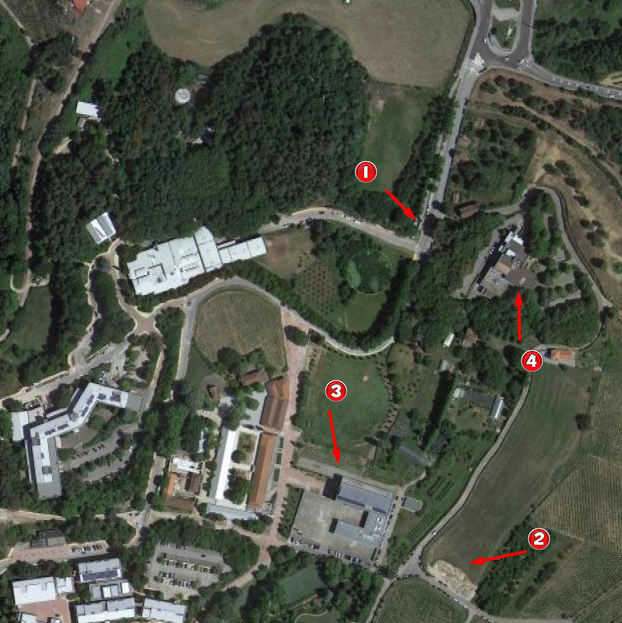MobiHealth 2023 is going to take place at Universidade de Trás-os-Montes e Alto Douro
Vila Real, Portugal
Vila Real is a city whose people are known for their hospitality. The city is located in the northern region of Portugal, in the heart of the Douro Valley, a privileged wine region. This is a place of choice for lovers of nature, gastronomy and wine.

Vila Real is situated in the North-East Interior of Portugal and stands at an average altitude of 460 metres above sea level, on the right bank of the River Corgo, tributary of the River Douro. It is located 85 kilometres from the Atlantic Ocean (West), 18 kilometres from the Douro (South) and 65 kilometres from the nearest international border – with the Spanish region of Galicia (North). The city is the capital of a province called Trás-os-Montes and Alto Douro (translates to Behind the Mountains and Upper Douro Valley), and lies between two rivers, the Cabril and the Corgo, whose deep gorges and steep cliffs give the area both beauty and grandeur. It nestles between the mountains of the Marão and Alvão ranges, on whose peaks snow can often be seen in the cold season. During the winter, the temperate continental climate can push temperatures below zero to a minimum of (-5ºC), while in summer the weather can be extremely hot (+37ºC). The city has a population of around 50 000 and is essentially a centre for commercial, agricultural and service activities.
The origins of Vila Real are lost in time, but we know that the area was already inhabited in the Palaeolithic period, and there is evidence of both Celt-Iberian and Roman settlements (pagan sanctuary of Panóias). During the Barbarian and Arab invasions the region was abandoned. In the 12th century peoples gradually began to settle, but it was only in 1289 that King D. Dinis presented the city with its charter.
Financially and culturally, the region around Vila Real reflects both the economic development of its wine sector, with the production of highly appreciated red wines and the world renowned Port wine; as well as that of what is known as the “Cold Land” (Terra Fria). The economy is mostly based on livestock, forestry and natural resources, which are the region’s greatest source of wealth – the rivers and wind generate electricity for the whole country, the geology provides spring, mineral and heated spa waters of the highest quality, and there are enormous reserves of granite and other ornamental rocks and minerals to be quarried. The Trás-os-Montes and Alto Douro region possesses some of the most spectacular scenery in Portugal, with extensive vineyards and impressive country residences that can be found in the valleys of the Douro and its tributaries – which together constitute the Port Wine Demarcated Region, recognized as World Heritage in 2001.
The natural beauty and contrasts of an unpolluted landscape – fertile verdant lowlands, lofty mountains, terraced valleys, olive and almond groves, deep forests, majestic rivers and gushing streams – all infuse the region with a charm, grace and peacefulness that leave no visitor unmoved. It is a region that combines centuries-old traditions – historical and archaeological heritage, traditional handcrafts and folklore, as well as varied and appetising cuisine – and an openness that encapsulates both the traditional hospitality of the region and its willingness to adapt to the challenges of today. All this endows the region with great tourist potential, and a privileged environment for pursuing academic studies.
About UTAD
The Trás-os-Montes and Alto Douro University became a fully-fledged University in 1986. Today, after years of commitment to high quality teaching, research and community extension, UTAD has earned its rightful place among the new generation of Portuguese universities, and is striving to make a name for itself at both national and international levels as a centre for academic excellence and innovation.
One of the University’s key challenges in the last few years was to adapt its undergraduate and postgraduate courses portfolio to the Bologna Declaration proposals and to the rapidly changing requirements of the labour market, the shifts in economic and social priorities at national and EU levels, and to the teaching and research opportunities provided by new technologies. UTAD is a high level institution oriented towards the creation and dissemination of culture, knowledge and science by merging teaching, scientific research and experimental development. Its core objectives are high quality Teaching, Research and Community Outreach, achieved by developing scientific activity that seeks to address issues of global, national or regional scope.
UTAD has an ability to adapt to new situations, balancing the resources available with modern teaching methods, and being able to propose new ways of learning and distributing scientific knowledge. UTAD inspires students to exploit their potential to the fullest, developing their academic and personal skills in order to respond to the changing needs of the labour market. This flexibility is irrefutable proof of the University’s vitality, which justifies its assertion within the Portuguese University System.
The campus, built on the site of a number of adjacent former farm estates, houses most of the Schools and Departments. It is located near the city centre and has bus connections to any city corner. There is also an academic unit close to the centre – a complex containing CIFOP (the Education Department), the Department of Arts and Crafts and the Department of Physical Education and Sports. UTAD also has facilities in the city of Chaves, to the north of Vila Real, near the border with Spain’s province of Galícia. Both the Cultural and Social Animation and Tourism degrees are housed there.
Location

- Campus Entrance | 41.28988482383358, -7.737414396916534
- Parking Lot
- Conference Room
- Panorâmico | Restaurant

